1
Situational Awareness, the Warrior Mindset, and the Psychology of Survival
SITUATIONAL AWARENESS
The first and most important step to learning the warrior mindset is to develop your situational awareness. Situational awareness is nothing more than staying alert, being aware of your surroundings, and understanding the reality of threats that you may face in any given situation. An individual with good situational awareness practices mindfulness to help them to better understand the fluid and ever-changing environment around them. It is this awareness which allows them to increase or decrease their level of vigilance accordingly and to remain grounded and ready to face any challenge with calmness and confidence.

Afghan children chasing our patrol. We usually knew we were not going to make enemy contact when we rolled through a village and there were children out playing.

It never ceased to amaze me how quickly children grow up in a war zone. This Afghan child of maybe six is leading a camel filled with supplies back to his village by himself with no adult supervision.
THE WARRIOR MINDSET
The path to becoming a warrior is not an easy one. At its core is discipline. A warrior is a master of spherical awareness, he is ever vigilant, he keeps his head on a swivel, knows his operational environment, can improvise, adapt, and overcome all adversities, and while he is able to accept that he is not invincible, he never runs from adversity, but instead faces it head on. The warrior fights with his mind, body, and soul, and while he has emotions, he must master keeping them at bay in order to fight without letting them interfere with his clarity and lucidity. None of these things will come easily, so do not be discouraged. The only path to mastering anything, particularly the warrior arts, is through hard work and due diligence. Now it is particularly difficult to master anything in the physical world until you conquer your own demons, such things in your head as fear, anxiety, panic, and self-doubt. Once you are able to eliminate these debilitating and useless thoughts, you can move forward in mastering the warrior mindset.
FEAR, ANXIETY, AND PANIC
A warrior must control his fear and anxiety in order to diminish panic and maintain clarity while projecting self-confidence toward the eyes of his enemy.

The root of fear, anxiety, panic, and self-doubt is lack of experience. Photo Credit: GettyImages
The root of fear, anxiety, panic, and self-doubt is lack of experience. Having a warrior mind-set means being able to set aside or subdue your fear and anxiety so as not to panic in the face of danger, and to diminish self-doubt and project self-confidence toward the eyes of any opponent. Confucius once said, “He who conquers himself is the mightiest warrior.”
STRESS INOCULATION
Once you learn to subdue your fear and vanquish panic, you will be on your way to achieving the warrior mindset. The biggest contributor to fear and panic is the unknown. The best way to conquer the unknown is to not only face it, but dive head first into it. By engulfing yourself in your fear, you will achieve “stress inoculation,” where you will be able to function and think with clarity even under conditions where your response would previously have been to panic.
An example of the stress inoculation technique would be something I went through personally. I am and always have been deathly afraid of heights. That said, in my twenty-five years in the Army, first as a soldier, then as a paratrooper, and then becoming and serving as a Green Beret, I have had to do many things from great heights. This includes maneuvering over high (and unforgiving) obstacles, climbing fifty-foot-high ropes, rappelling off of one-hundred-foot towers, soaring above the trees under a fast-moving chopper in a Spies (Special Patrol Insertion/Extraction System) rig after a jungle extraction, F.R.I.E.S. (Fast Rope Insertion/Extraction System) roping out of helicopters hovering ninety feet above the ground, static line parachuting onto drop zones around the globe with full combat equipment from eight-hundred feet, and jumping from an airplane from 25,000 feet with an oxygen tank, eighty pounds of equipment, a ram-air parachute on my back, and my weapon strapped to my side, into the dark of night. I was able to do all of these things, not because I am particularly courageous, but simply because I had the discipline to face and inoculate myself with my own fears so that I could, if not vanquish my fears completely, at least hold them at bay to a point where I could do my job with clarity of mind and with the absence of panic.
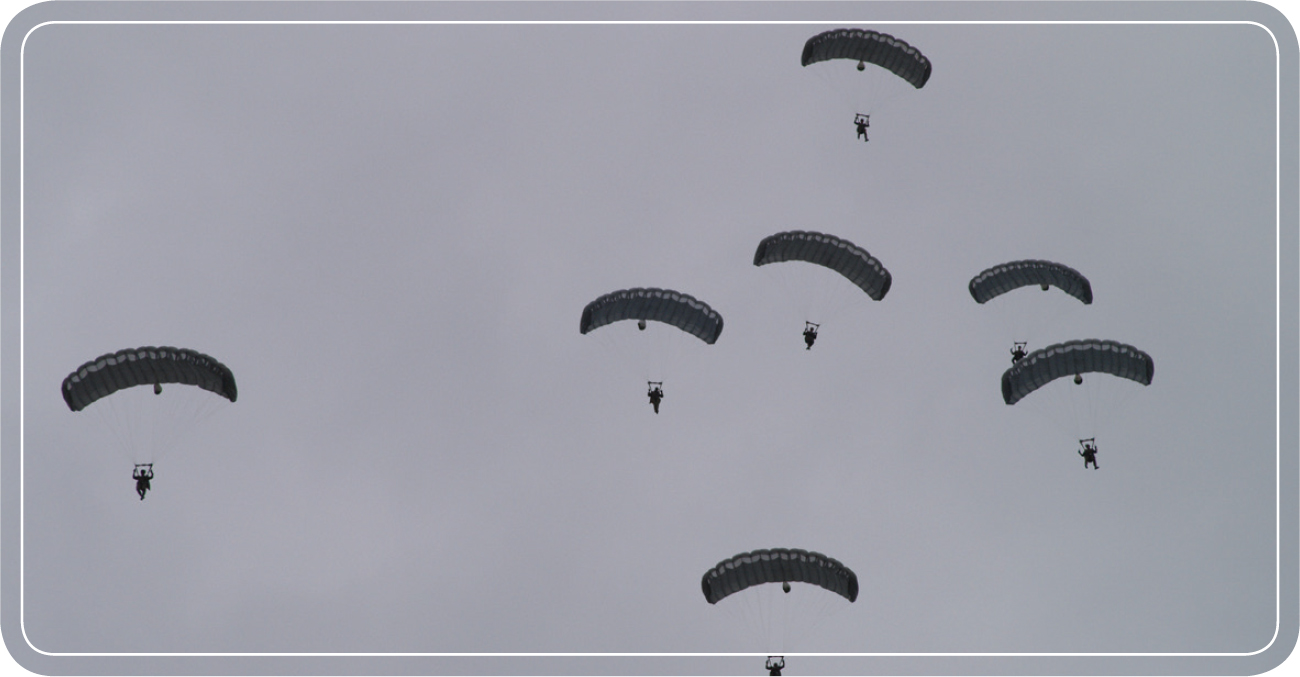
Photo Credit: GettyImages
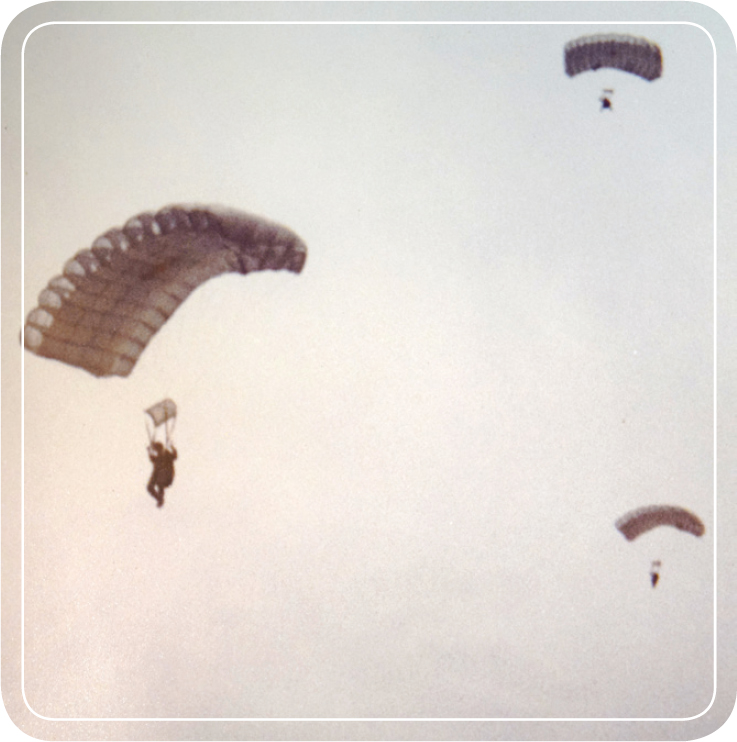
The author (left) descends down from a HAHO (High Altitude High Opening) jump of over 20,000 feet (circa 2000).
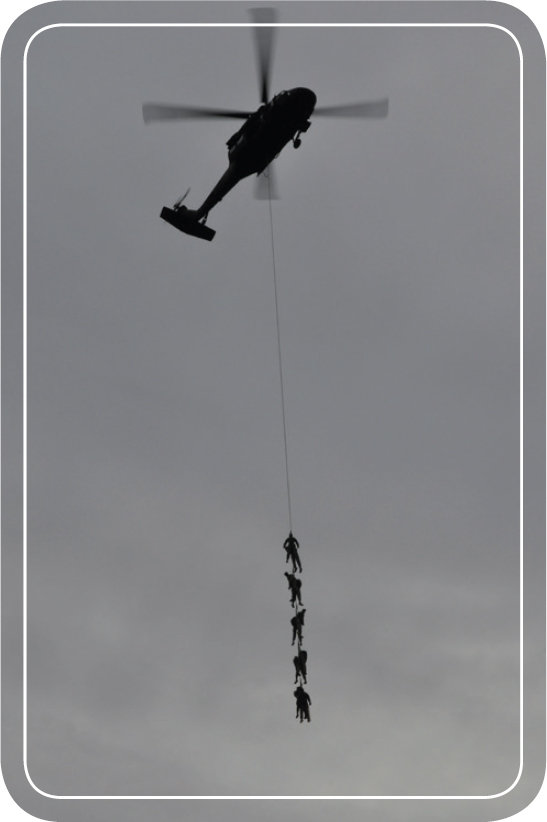
Special Operations Forces (SOF) use S.P.I.E.S (Special Patrol Insertion Extraction System) to rapidly insert and or extract small recon patrols and sniper teams from areas where a helicopter can’t land.
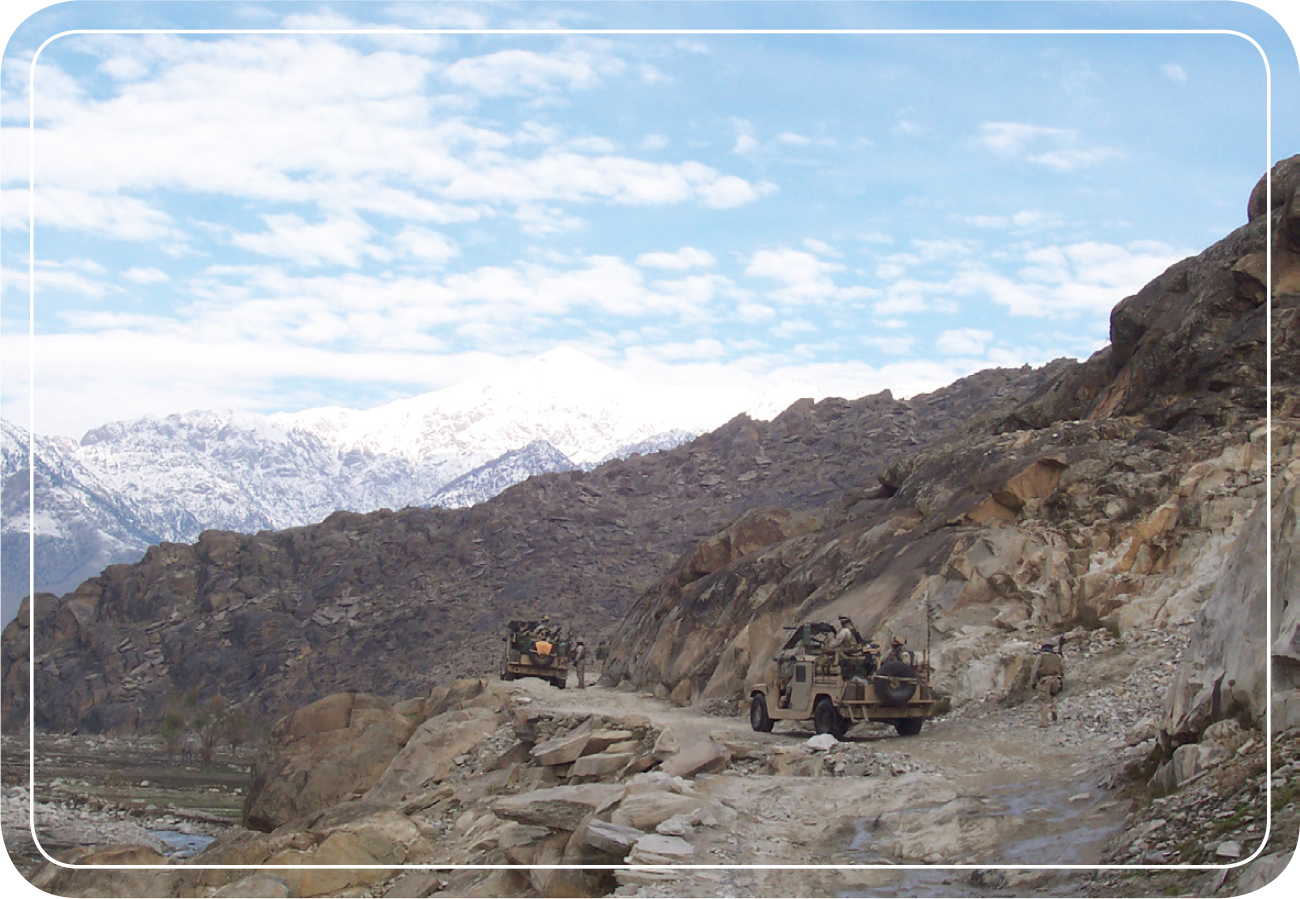
The author’s Special Forces unit on patrol in the mountains of northeastern Afghanistan, along the volatile Afghan Pakistan border (circa 2008).
FACING FEAR
A warrior never runs from adversity. Being a warrior is about showing up to the fight when every bone in your body tells you to run in the opposite direction. It’s about striving for greatness so that you know either the elation of high achievement and victory or the pain of defeat. In any case, you can hold up your head proud knowing that you showed up to the fight as opposed to running and hiding, as is the choice of so many of the timid masses.

Being a warrior is about showing up to the fight when every bone in your body tells you to run in the opposite direction. Photo Credit: GettyImages
CITIZENSHIP IN A REPUBLIC SPEECH BY THEODORE ROOSEVELT
Theodore Roosevelt said in his 1909 Citizenship in a Republic speech that:
“It is not the critic who counts; not the man who points out how the strong man stumbles, or where the doer of deeds could have done them better. The credit belongs to the man who is actually in the arena, whose face is marred by dust and sweat and blood; who strives valiantly; who errs, and comes short again and again, because there is no effort without error and shortcoming; but who does actually strive to do the deeds; who knows the great enthusiasms, the great devotions; who spends himself in a worthy cause; who at the best knows in the end the triumph of high achievement, and who at the worst, if he fails, at least fails while daring greatly, so that his place shall never be with those cold and timid souls who know neither victory nor defeat.”
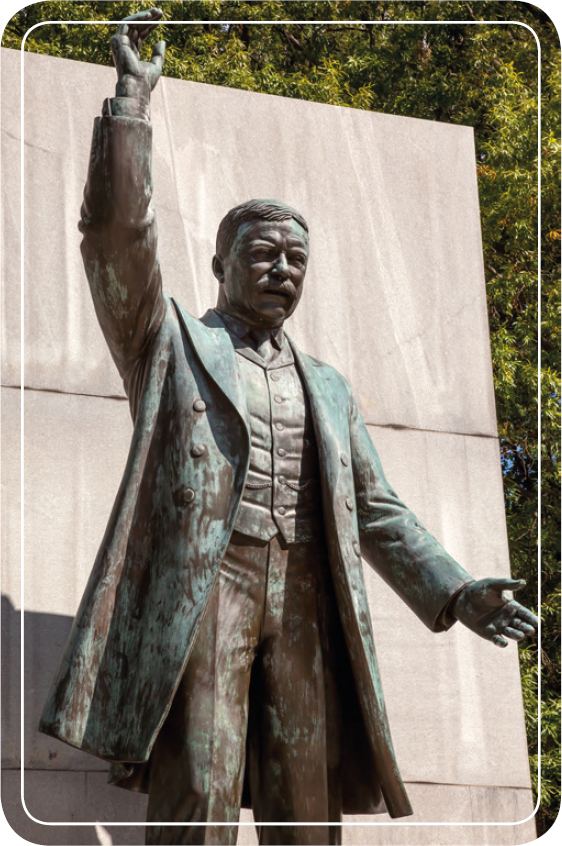
Theodore Roosevelt was a true warrior statesman. Photo Credit: GettyImages
OVERRIDING YOUR FEARS
What defines you as a true warrior is your ability to face adversity, and that doesn’t mean you have to be a hero or that you’re some kind of a superman, because I can tell you from personal experience that one of the most difficult things in the world is to override the basic human instinct to protect yourself. As a warrior there will be times where you may have to have the discipline to counter your innate human instinct to remain safe and to then run toward the sound of enemy gunfire. It’s having the mentality that you’re going to put yourself into the fight no matter what the situation is, particularly if you have brothers who are in the fight, to get in there and to help them against any odds.

You have to have the mentality that you’re going to put yourself into the fight no matter what the situation is, particularly if you have brothers who are in the fight. You have to get in there and to help them against any odds. Photo Credit: GettyImages
GOOD FORM AND REPETITION ARE THE KEYS TO SUCCESS
Any time you look at people who are successful at doing something, you will find that they usually got that way by learning the proper way of doing something, and then applying due diligence, repeating that same skill over and over again until it became second nature. One of the other traits of successful people is that they are able to learn from other people’s mistakes. They can also look at other people who are successful and break down, in a simple way, why they were successful. Then they apply that to their own life.

If you’ve practiced bad technique over and over again, then you’ve gotten really good at doing something really badly. Photo Credit: GettyImages
I try to do that as much as possible. When it’s something that I don’t know about, I look for somebody who is good at it and I see how they do it, then I try to basically mimic what they are doing. The one thing that I have always tried to do is stay good at a few skills. The way to do that is to pick out the skills that are, in your mind, the most important skills to maintain and then make practicing those skills an integral part of your day, just like brushing your teeth or reading the paper.
The way to master a skill is through repetition; just doing that task over and over again with really good technique. Learn how to do it the right way, as technique is everything. If you’ve practiced bad technique over and over again, then you’ve gotten really good at doing something really badly. It’s important to get the correct technique down in whatever it is that you’re trying to learn, be it fighting, yoga, or finger painting. Try to remember that all skills are perishable, and just because you are the master of a skill today does not guarantee that you will be a master five years from now if you don’t continue to practice. If you really want to maintain those skills, then the only way to do it is through practice and through making it a part of your everyday life.
BE FLEXIBLE
A warrior is flexible, and knows how to improvise, adapt, and overcome. It’s important to remember that techniques sometimes need to change when situations change, and it is up to you to learn or relearn what you need to know in order to maintain mastery of your chosen discipline. For instance, when I was in the Special Forces it was imperative that I be highly proficient at transitioning from my rifle to my pistol as rapidly as possible if my rifle ran out of bullets or malfunctioned. Well, I am retired from the military now and it is no longer a necessity for me to be able to quickly transition from rifle to pistol, as I no longer carry a rifle as part of my everyday carry. I do, however, always carry a concealed pistol. The physical act of drawing a concealed pistol from a concealed pistol holster happens to be much different from drawing a pistol out of a leg holster, so it was back to the drawing board for me. I had to completely change my technique and basically relearn what I was doing in order to become as proficient and lethal at drawing my pistol from a concealed holster as I was when I was in the military and I drew from a tactical leg holster. So remember, you can’t just live off the fact that you knew how to do something a long time ago and expect that those skills are going to stay with you for life. You have to maintain and in some cases modify those as you go along, If nothing else, you should continue to practice, no matter how good you think you are at any given discipline.
A WARRIOR WILL NEVER QUIT!
The Spartans said that “any army may win while it still has its legs under it; the real test comes when all strength is fled and the men must produce victory on will alone.”
Having the will to fight on and not to quit on yourself is more of a trait than it is something you can learn through conditioning. A warrior’s heart is not afraid of death so much as it fears a life lived without honor, loyalty, and standing up for what is right. A warrior never leaves a fallen comrade behind and only needs to look to his left and right to find a reason not to quit but to keep the will to drive on until the war is won!
THE PSYCHOLOGY OF SURVIVAL: CONTROLLING YOUR EMOTIONS AND THINKING ON YOUR FEET
Life is not an action movie. Actors use the magic of Hollywood to make them seem invincible but the reality is that in the real world there are no stunt coordinators, bats and clubs are not cardboard, rocks are not paper machete, and guns shoot real bullets. In a real, potentially dangerous or life-threatening situation, running away is not always a bad option. If you sense danger and your mind tells you to run, then either you are not trained and conditioned to react to that particular situation or the threat is just so overwhelming that it is beyond anything that your subconscious thinks you are prepared to deal with. This is not to say that you should not stand and fight if you are ready and able to do so. I have personally been in situations where I had to run as fast as I could toward the sound of (enemy) automatic gun fire in order to support my comrades in need on the battlefield. The hard part is to over-ride common sense in order to intentionally put yourself in harms way. Personal courage, emotional connection, training, and motivation are all factors that can override the freeze and flight parts of the response and propel you forward to engage the danger, whatever it may be.

Personal courage, emotional connection, training, and motivation are all factors that can override fear in times of danger where lives depend on your ability to maintain your composure and get the job done. Photo Credit: GettyImages
THE ACUTE STRESS RESPONSE
The acute stress response—also known as the fight, flight, or freeze response—is hardwired into the human psyche. This is how our ancient ancestors were able to act appropriately when facing a dangerous animal or when fighting an enemy. In the moment of danger, the blood on the surface of your skin reduces so that the blood flow can increase in your arms, legs, shoulders, eyes, brain, ears, and nose. This physiological change increases all of your senses, making you extremely alert, and it transfers the blood flow to your arms and legs so you can fight or run. While fighting and fleeing are possible choices you can make, freezing, or simply doing nothing is, while not always a good choice, still an option.

The acute stress response is hardwired into the human psyche as a result of millions of years of evolution. Photo Credit: GettyImages
FIGHT, FLIGHT, FREEZE
These are some other physiological and psychological signs of the fight, flight, freeze response that human beings may experience when they are faced with a threat:
FIGHT
• Trembling out of anger
• Increased heart rate
• Hands in fists, desire to punch, rip
• Flexed/tight jaw, grinding teeth, snarl
• Fight in eyes, glaring, fight in voice
• Desire to stomp, kick, smash with legs, feet
• Feelings of anger/rage
• Knotted stomach/nausea, burning stomach
• Feeling like a volcano is erupting inside of you
• Bursts of above average strength compared to normal ability
FLIGHT/FREEZE:
• Trembling legs
• Holding breath/shallow breathing
• Screams of fear
• Terrified look on face
• Sweating profusely
• Loss of use of small muscle groups
• Able to quickly move out of the way or run away
THE PHYSIOLOGY OF STRESS
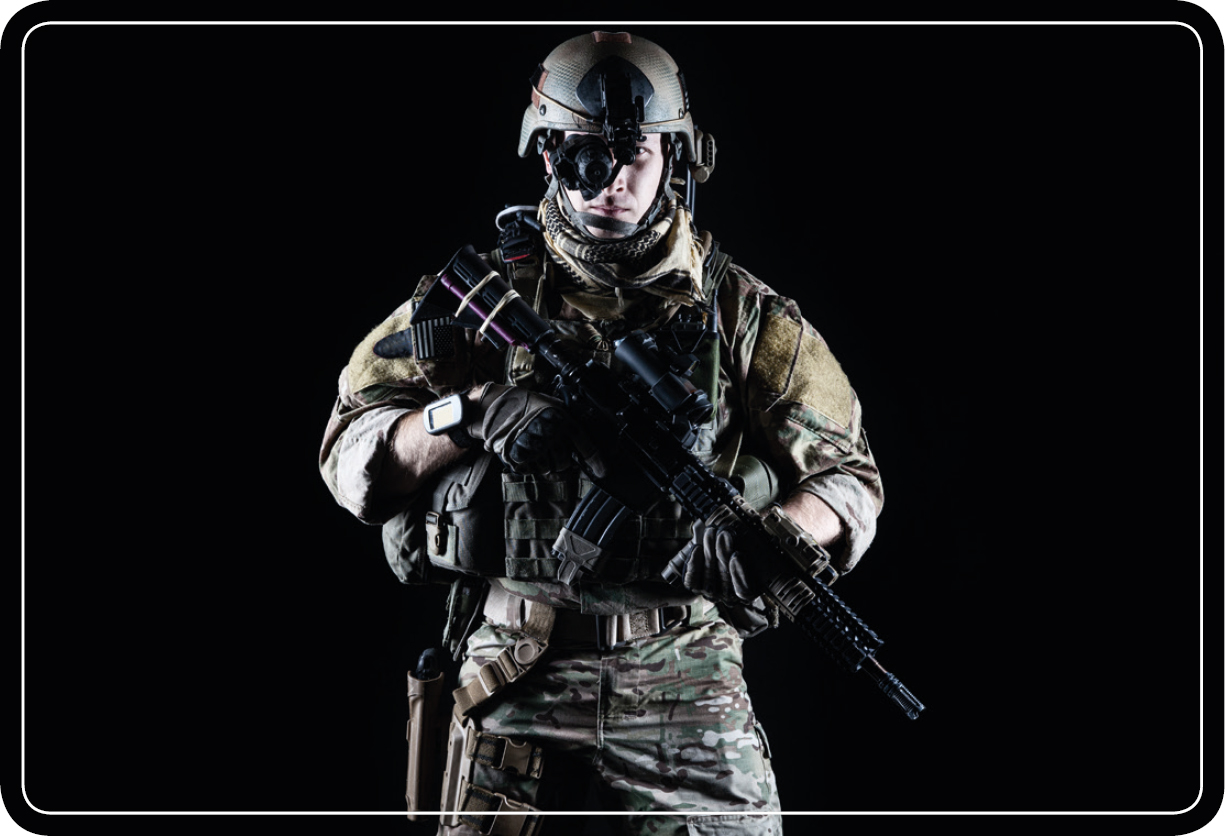
In today’s modern world of precision weaponry, fighters are often required to maintain steady breathing and body position and make slow, calculated movements while under extremely stressful and dangerous situations. Photo Credit: GettyImages
Humans are uniquely designed with all the physical potentials and psychological instincts needed to either club a wild boar on the head, thrust a pointed stick into a woolly mammoth, run up a tree to escape being eaten by a saber-toothed tiger, or outrun a tribe of Neanderthals trying to crush your skull with rocks. That said, in today’s modern world of precision weaponry, fighters are often required to maintain steady breathing and body position and make slow, calculated movements requiring the use of small motor skills.
The problem is that along with these feelings and displays of behavior comes a loss of fine motor skills needed to react quickly and lethally in response to the threat in order to give you a tactical advantage. The fight, flight, freeze response can also result in a surge of adrenaline that can result in tremors that can affect your stability, surefootedness, and accuracy needed to neutralize any threat or threats you may come up against. Finally, the natural fight, flight, freeze response can result in a severe decrease in spherical awareness as the mind becomes fixated on the perceived threat is if in tunnel vision.
HOW TO TURN ANIMAL INSTINCT INTO A MODERN PRECISION THREAT RESPONSE
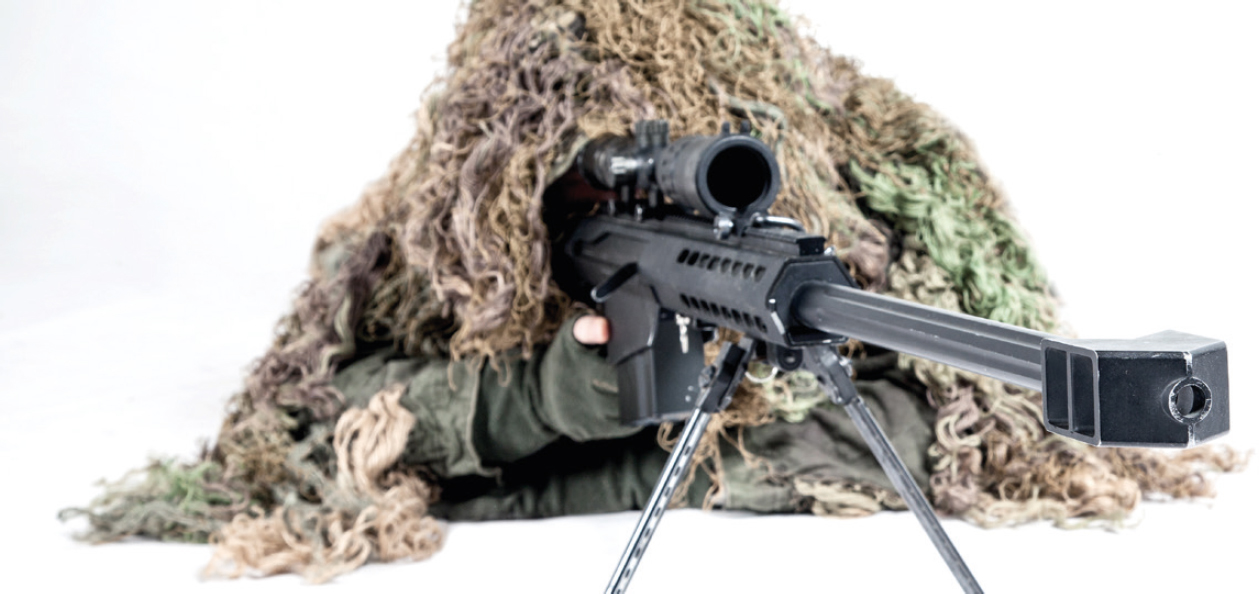
I always say, “Never get in a foxhole with someone braver than you are.” Photo Credit: GettyImages
The threats today are no less real than they were to our ancient ancestors. How is it that we can control our physiological and psychological responses to danger in such a way as to be able to overcome some of these natural reactions to danger and perform the actions necessary to eliminate the threats that we are faced with?
The answer is stress inoculation coupled with repetitive training techniques. This allows us to turn specific motor skills into natural bodily movements that require little to no conscious thought. In the Special Forces we called it “muscle memory.” Now obviously muscles do not have actual memories, but by engraving a specific motor task into your memory by way of repetition, you will eventually gain the ability to perform that task without any conscious effort.
Think of what happens when a child runs out into the road up in front of your vehicle while you are driving. You immediately take your right foot off the gas pedal and place it on the brake pedal. Unless you are brand new to driving, chances are that this action required very little thought. By using repetitive training techniques it is possible to achieve this same level of muscle memory, or Zen, in any of the lethal arts. When I first began learning the Special Forces way of fighting, I started by simply learning to draw my pistol. It was almost two months before I actually fired a live round. I wore my rig, consisting of a pistol belt, spare mag pouch, and a leg “drop” holster that was attached to my pistol belt and strapped to my leg. I had my F92 Berretta 9mm service pistol with a magazine of dummy rounds and I spent hour upon hour and day upon day practicing drawing my pistol from the holstered and secured position, running it up my side, then joining my firing hand to my non-firing hand at my sternum. I then picked up a sight picture on a target and fully extended my arms either into a completely extended fighting stance or placed my finger on the trigger and simultaneously extended my hands and pulled the trigger so that the hammer would fall at the exact moment when my arms were fully extended. I would then put the weapon on safe and then back onto fire in order to de-cock the pistol, and I would re-holster the gun and start the process all over again. I’m not sure how many thousands of times they would make us do these drills but I can tell you that they helped to build a muscle memory foundation that I would have for the rest of my life. Now this was of course just the foundation of our training. After advanced rifle and pistol training, we would learn to use a whole arsenal of other weapons from sniper weapon systems, recoil-less rifles, mortars, and even Naval gun fire, to learning how to fight with a knife or simply with our bare hands. The Green Berets pride themselves on being able to conduct precision operations where threats are neutralized with surgical precision and collateral damage is minimal to nonexistent. This requires each member of the team to be trained to perform their duties flawlessly under enormous amounts of stress in the most arduous environments. The only way to do this is to first train in your individual tasks until you are at a point of muscle memory and then train with your other team members to not only complete your own tasks to perfection, but also to be able to step in and complete the tasks of any of the other members of the team if needed. To accomplish this elite level of training, it is imperative that you ensure that the conditions are stressful enough so that you will eventually become inoculated to the stress and physiological changes that take place when we face danger. They will be kept at bay to a point where we can still function and accomplish our mission. It is good to have a little bit of fear when you are doing dangerous operations. The fear will help you by making you hyper alert to any potential threats and can be quite beneficial in a combat-like scenario. I always say, “Never get in a foxhole with someone braver than you are.”
TRAINING AND PREPARATION: THERE IS NO SUBSTITUTE FOR DUE DILIGENCE AND HARD WORK
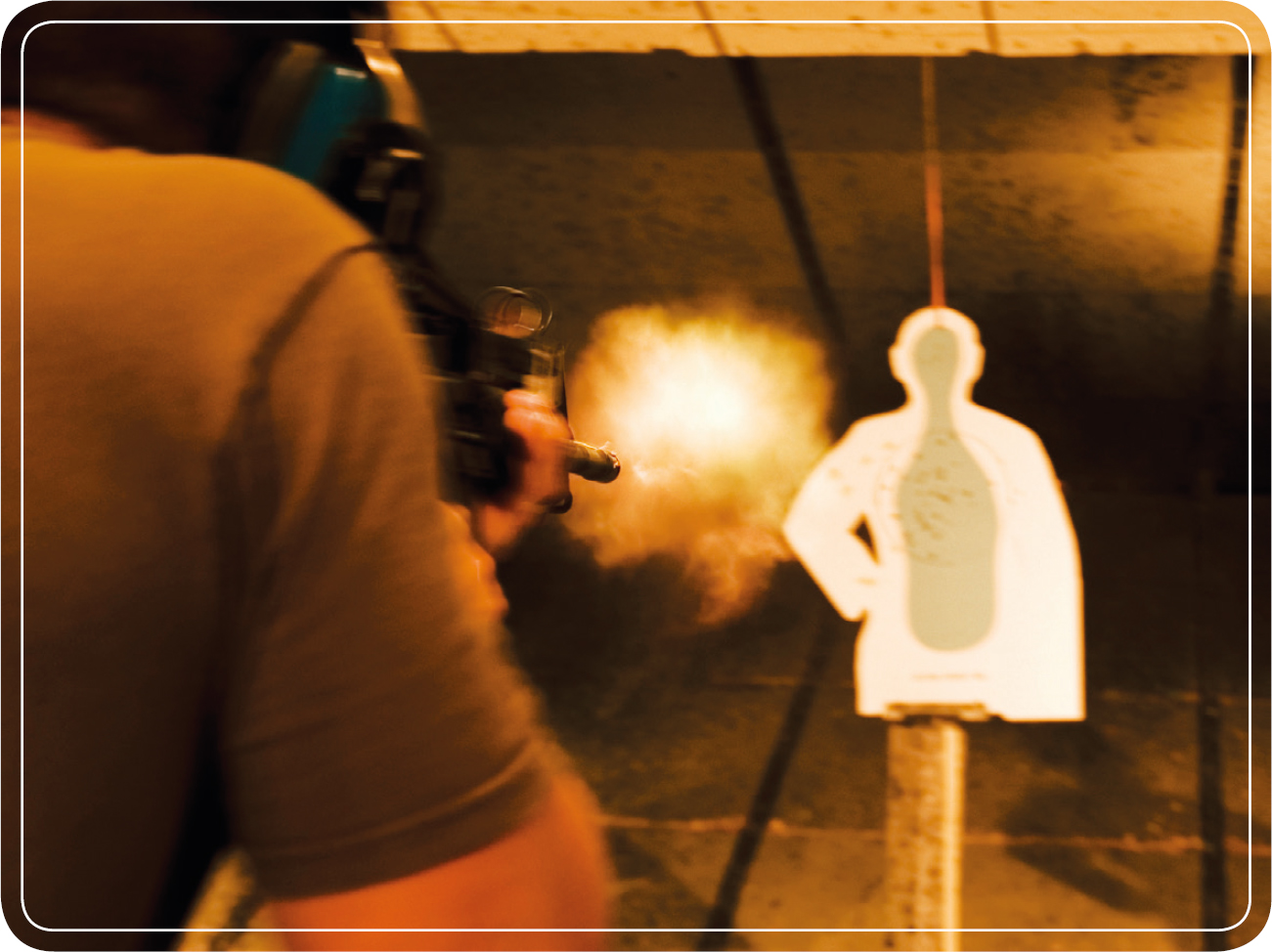
Photo Credit: GettyImages
So, obviously it is not realistic to expect to be able to train yourself to the elite level of our Special Operations Forces. That kind of training costs millions of dollars and requires a specific type of person who must be disciplined and committed enough to spend years of time solely dedicated to training in order to achieve the level of mindfulness required to override the body’s natural response to run or freeze when faced with overwhelming danger and extremely high risk of loss of life. They are able to do this successfully through intense and prolonged training and rehearsals coupled with every man on the team taking part in the extremely detailed planning process. The fact that each man knows every plan intimately and has rehearsed and trained to ad nauseam on standard operating procedures and contingency plans for when things don’t go as planned is what allows these elite fighters to mitigate risks from a suicidal level down to an acceptable level of risk.
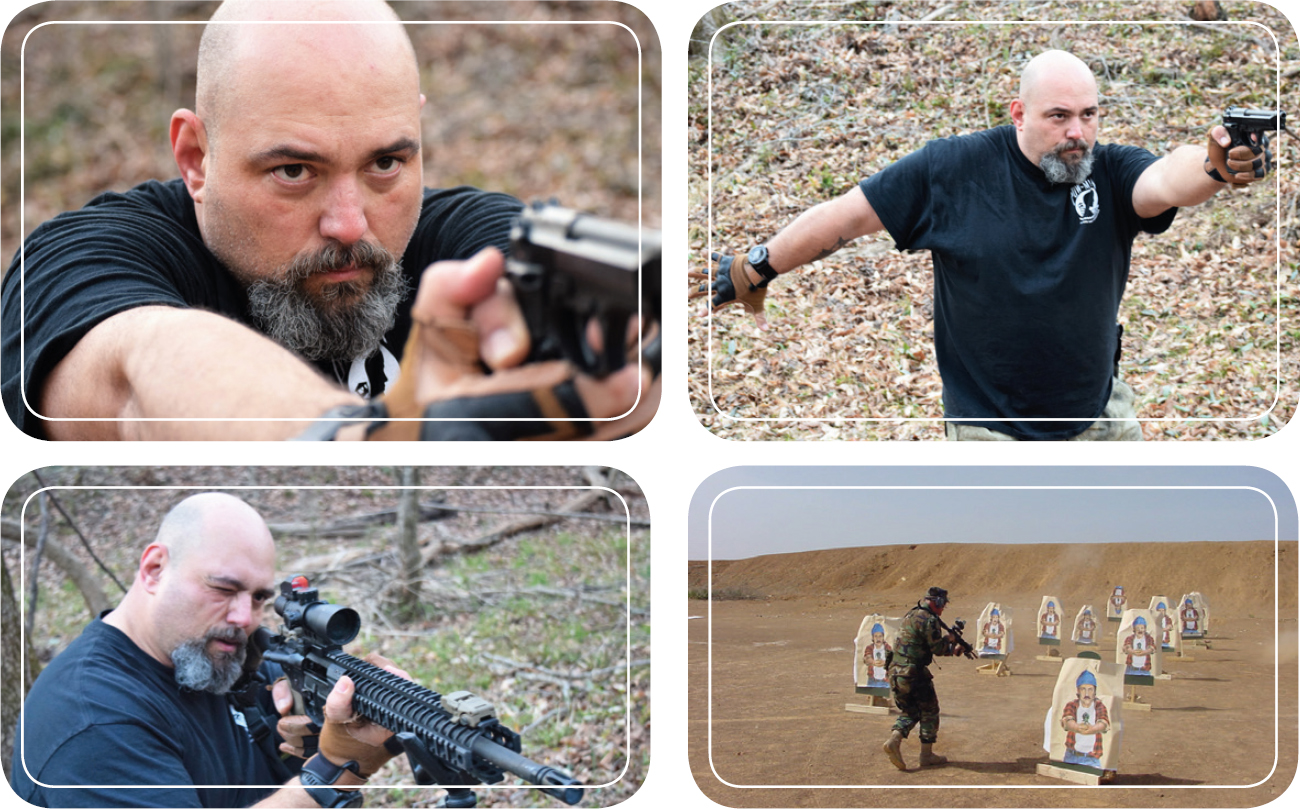
If you want to be excellent at something, you need to learn excellent technique and then practice until perfect. There is no shortcut to obtaining experience. If you truly want to improve, then you must be willing to dedicate yourself to hard work and laser focus.
The good news is that you don’t have to train like a Green Beret or a Navy SEAL to prepare yourself to override your natural desire to run from a threat. A good example of how to do this kind of training is something I experienced back in my beginning years as a Green Beret on Fort Bragg, North Carolina. Special Forces soldiers and Special Operators in general normally practice some form of mixed martial arts or what the Army calls “Combatives Training.” We did this on a regular basis in order to prepare for those contingencies where you either can’t get to your weapon fast enough to neutralize a threat, you run out of ammunition, or you simply need to take out an adversary without bringing unwanted attention to yourself. At this time in my career my ODA (Special Forces Operational Detachment-Alpha) was training under Master Ronald Don Vito, a retired Marine Master Gunnery Sergeant who was the senior trainer at one point for the USMC’s hand-to-hand combat program and who was the founder of the L.I.N.E system of fighting. L.I.N.E stands for Linear Infighting Neural Override Engagement. In short, it is a fighting style that requires you to be able to execute all of the techniques effectively and with proper form while under low-light conditions or other impaired visibility conditions (i.e., smoke or gas), under extreme mental and physical fatigue, and while wearing full combat gear. Ron had a highly effective (some might call it sadistic) way of testing each of us at the end of each day of training called the “swarm.” To execute the swarm, the student being tested would have to get into full “battle rattle” or full kit, meaning that you had all of your body armor and equipment on that you would normally be wearing when outside of the wire in a combat environment. Sometimes we would do this in low-light conditions or he would add some smoke to lower visibility when we were training outdoors. Once kitted up, the rest of the students would, on Ron’s order, commence to kicking your ass using L.I.N.E techniques, and your only defense was to use the L.I.N.E counter-moves to defend yourself and strike back. And if you are thinking you would just run, forget about it because the other students had orders to chase after you to the parking lot, the woods … wherever the fight took them! I can remember a similar Don Vito training method when we were learning to fight with knives where Ron would make us use stun guns in place of harmless rubber training knives that would deliver a high voltage and low current sting every time you touched your sparring partner with it. Well, I can tell you that these are both examples of ways to maximize your ability to train under stressful conditions, while remaining in a controlled environment with safety precautions in place and all without breaking the bank!
Like I said earlier, you don’t have be a Navy SEAL or a Green Beret to train realistically and effectively; you simply need to think outside the box in order to create an environment that will allow you to practice under enough stress to allow you to focus and execute under duress, building skill, confidence, and ultimately making you better at whatever it is you are trying to learn to do. No matter if it is shooting, mixed martial arts, or any of the lethal arts, if you are willing to put in the time, energy, and dedication, you can train yourself to a level where you can confidently and effectively stand and fight or get up and run toward the sound of bullets when duty or obligation calls.
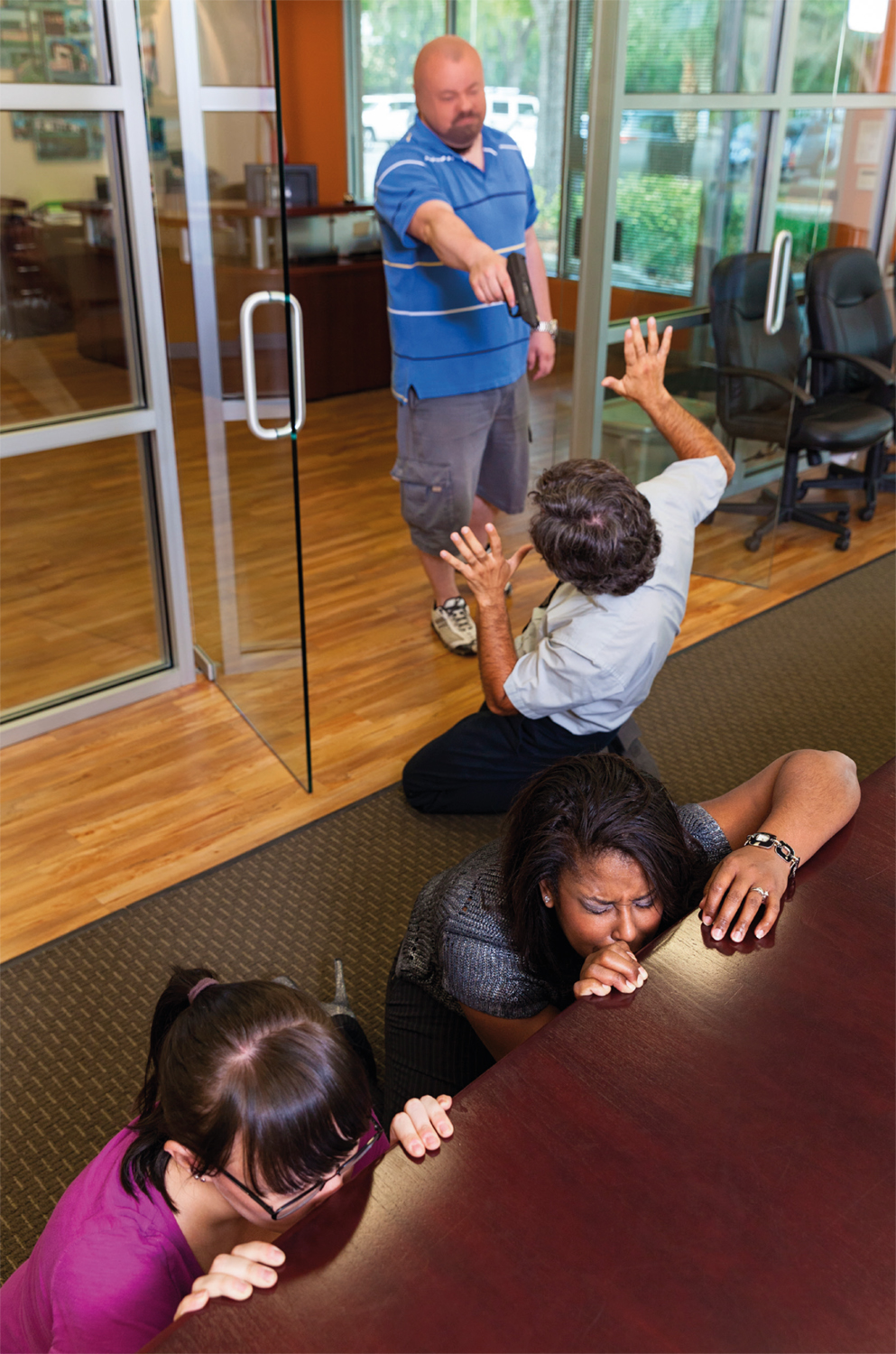
Stay calm. The first thing that is going to kick in is your fight or flight reflex, and your adrenaline is going to be flowing. You need to be aware of this and try to continue to breathe and maintain your calmness and your situational awareness.